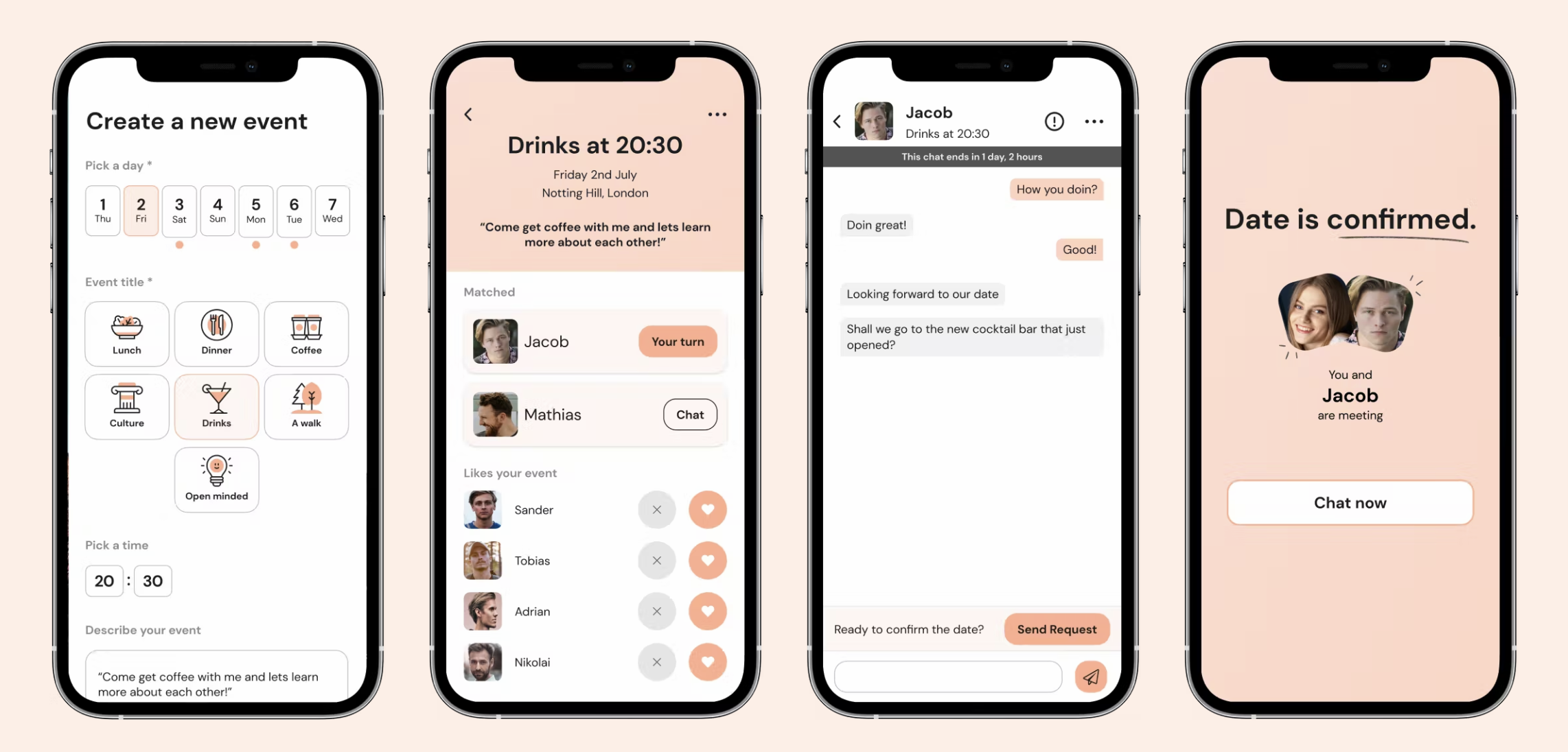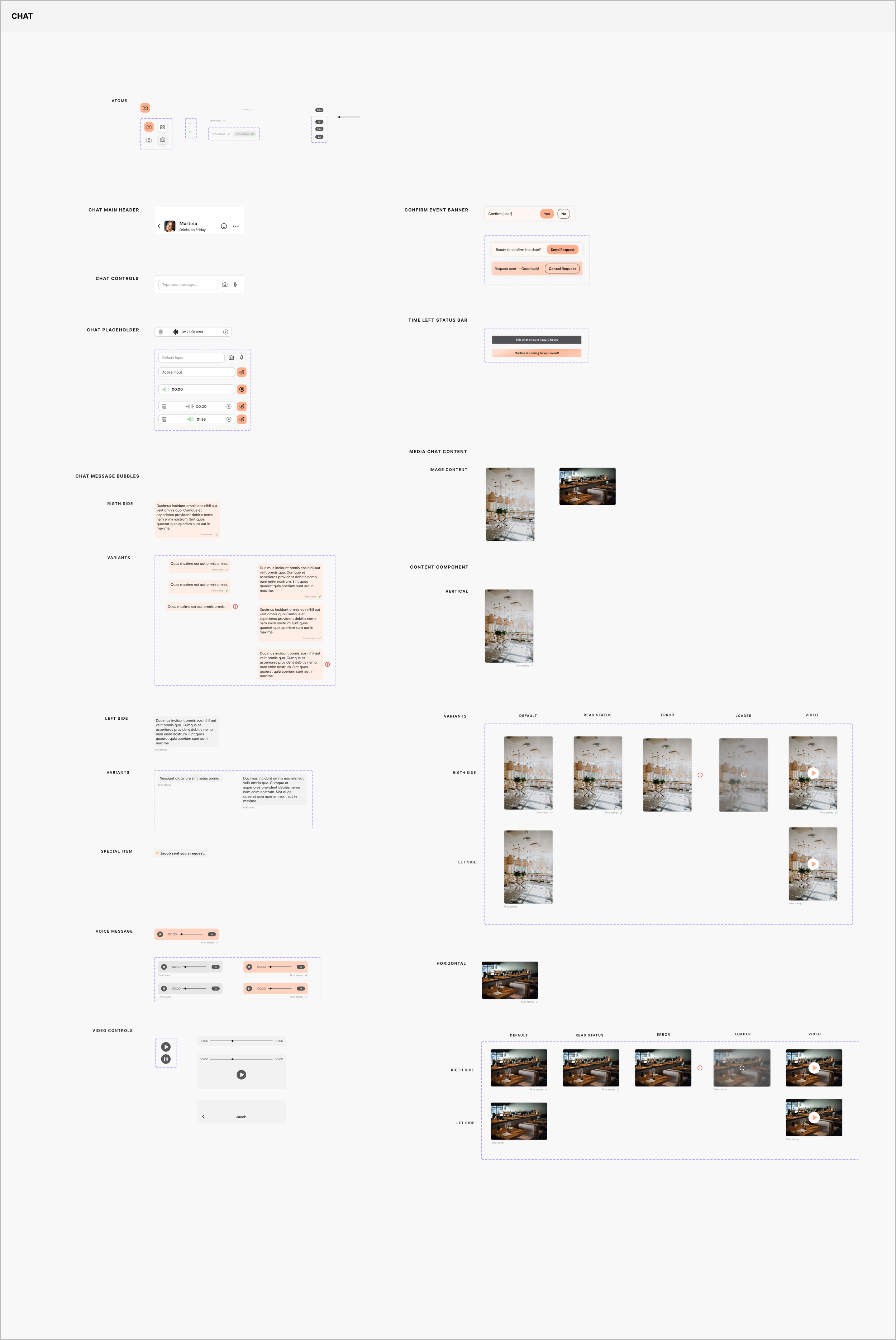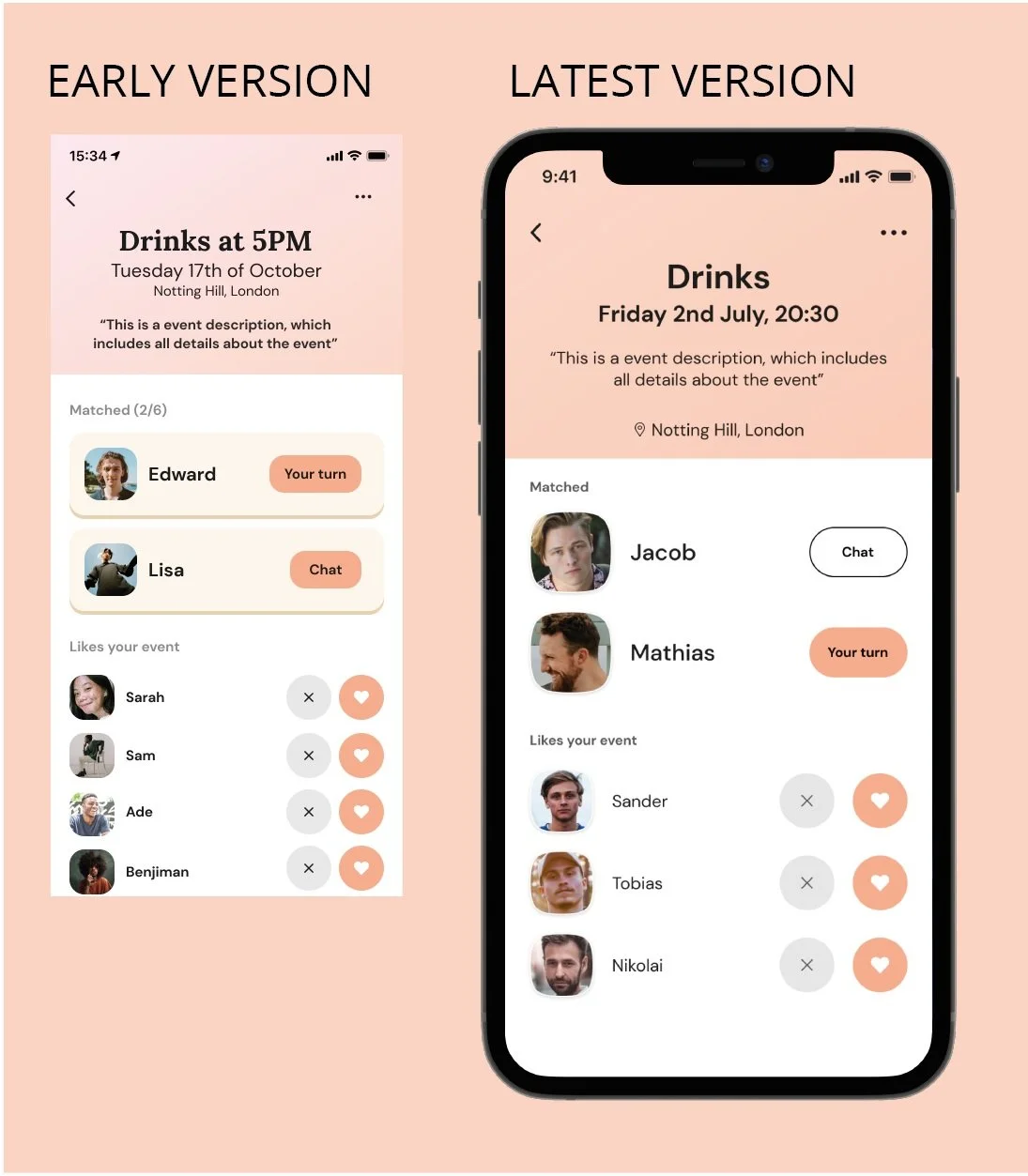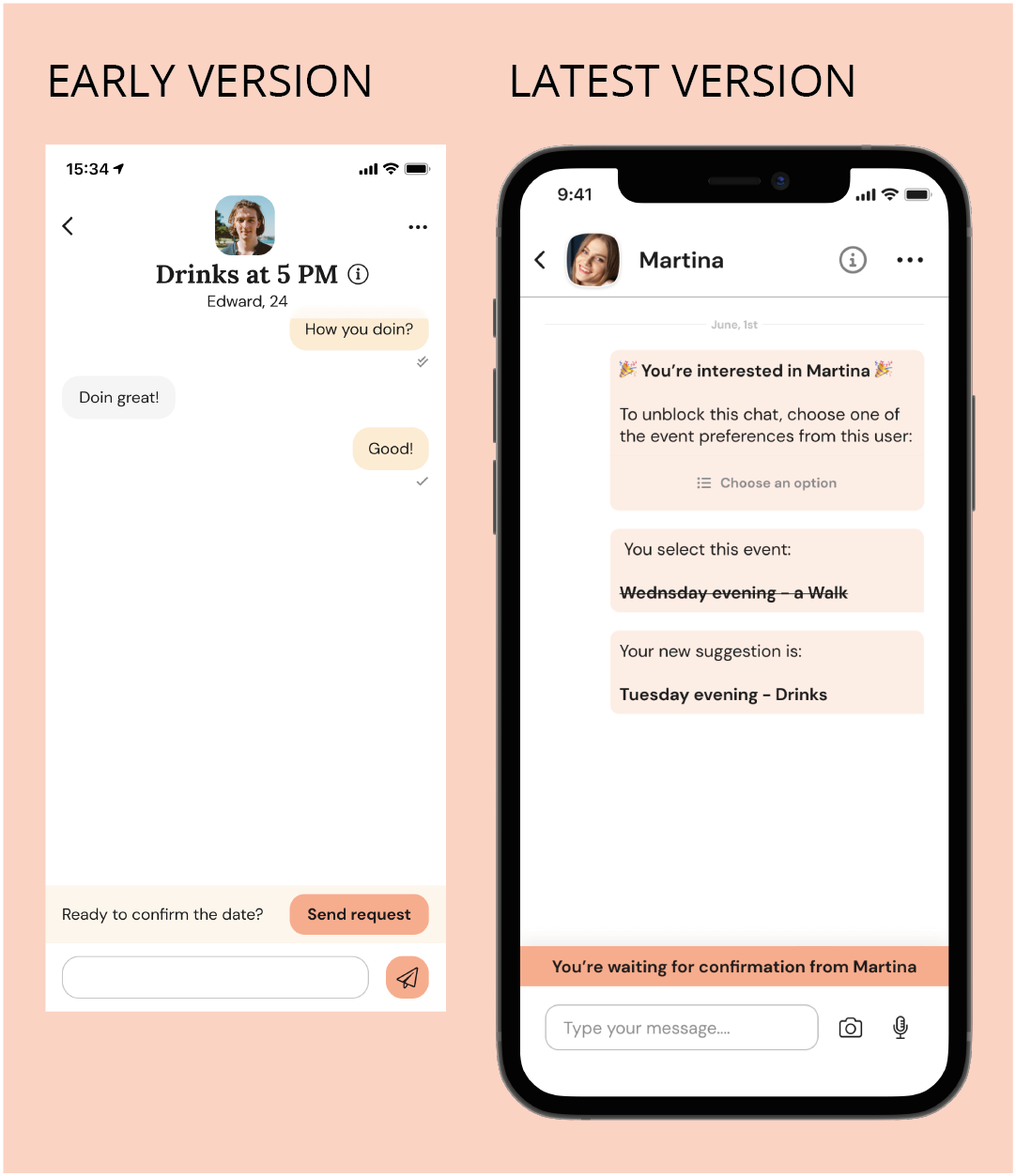Timeling:
Meetup dating
Timeling is a calendar-based app that lets you create meetups, explore and meet like-minded people. Go on dates and meet new friends. Alongside a team of 10, I brought to life the product as Head of design by condensing and distilling the insights gathered from the team and future customers. The app has continued to thrive since leaving shortly after launch and is now launching in its 5th country.
Project Details
Role: Head of Design (Employed)
Length: 6 months
Key skills: Workshops, design system (Figma), User testing, App Architecture, User flows, Wireframing
My Role
I arrived on the project over a year after the company had started building the product. The designs up until that point had not been user-centric and coherently formed. As the new head of design, I focused on implementing the correct UX best practices. This meant creating a design language and structure that could be followed by myself, the two other designers, and any that followed me.
For the product to become user-centric I conducted user research in the form of interviews with key identified user groups. The existing designs were user tested and a base level for success was set.
Managing delivery and resource expectations with the founder was a key aspect of the role when implementing an agile sprint format for the completion of work.
Setting up best practices within the team for how to correctly document, organise and deliver work. Starting this made handovers to developers and product reviews with stakeholders easier work.
From concept to market - Design thinking
Workshops
I ran full team workshops when imagining and developing concepts of key features of the app, and specialists from the industry were also brought in to help ignite new ideas. After this, all the information was collated and presented back to the team with a plan to see results.
Design Process
Creating a design system and introducing methods for documenting work transformed the way the team functioned as a whole. The Design system created a unified way of working within the design team alongside this we had the design and brand guidelines. The new documentation allowed tasks and changes to be tracked in detail across Jira which streamlined handovers.
End-to-end experience mapping
Mapping the entire journey and user flows through the app meant that any gaps in the experience didn’t get missed. These were updated constantly as designs changed and adapted these became a source of truth for the team to reflect on before moving forward with the interface design.
User testing
The four rounds of testing provided the workshops with the majority of the data we needed to iterate through the designs. The testing was carried out at different stages along the journey towards launching and then after launch a total app review was completed with real users that had organically downloaded the app. Additionally, to understand gaps within the user experience, we discover lots of wants and requests that helped shape the roadmap for the product.
Final Designs
After the app was released a large restructuring was needed because the traffic through the main feature was too low, so the designs needed a feature to show profiles constantly as opposed to disappearing each week with the expiring of their events. These final designs are the last I worked on and were formed from the information gathered from the large-scale user testing. I worked on further designs that have not yet been released and for confidentially reasons can not show these.






